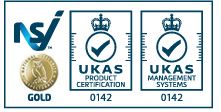
Fire alarms in schools, colleges, nurseries and other education facilities are essential. However, installing and maintaining a fire alarm is not that simple. A fire alarm system is made up of various components. These components include sensors, detectors and various notification devices. The notification devices come in different forms such as bells, sirens and lights. A fire alarm system also includes the control panel and power supplies too.
The type of fire alarm system you choose for your educational facility and the placement of it plays a pivotal role in how effective the fire alarm system will be at not only detecting the threat, but also quickly alerting everyone within the educational premises.
You will find that some fire alarm systems also include sprinklers. These are used to instantly extinguish the flames of the fire. Some fire alarms will also offer two-way communication and remote monitoring services. The remote monitoring feature on a fire alarm system can send an instant alert to the fire service in the event of the fire alarm triggering.
Fire alarms are categorised into two broad categories as outlined by the British Standard 5839, also known as BS 5839. These two categories are property protection and life protection.
The role of a property protection fire alarm is to protect the property. This fire alarm will contact fire and rescue services at the early stages of the fire. A property protection fire alarm will include a type P1 fire alarm and a type P2 fire alarm. These fire alarm systems will have automatic sensors installed throughout the school or college and throughout designated areas.
However, the role of a life protection fire alarm system is to protect the people in and around the building from injuries and loss of life. This type of fire alarm system is comprised of both manual call points (known as type M fire alarms) and automatic fire detection systems.
Within a school there will be two main types of fire alarm systems. These will be conventional fire alarms and addressable fire alarms. A conventional fire alarm will be set up in zones that, when the alarm is triggered, can help identify the location of the fire. This is done by identifying the zone on the fire alarm system.
It is worth noting that these zones are broad though. They will not give the exact location of the fire. While this makes them ideal for smaller schools or educational settings, they are not well suited in larger schools, colleges or universities for example.
An addressable fire alarm with identify the exact point where the fire erupted. This is possible because each device within the fire alarm system has an address or location. Addressable fire alarms are ideal in larger schools and educational settings because of this. This type of fire alarm can identify and locate the source of the fire without any delay.
It is not a case of ‘one size fits all’ when it comes to the best fire alarm system for your educational setting. However, there are ways that you can choose the best fire alarm system for your school. This is based on your particular needs and the risks to your facility. Our professional educational fire safety experts can take the time to understand the size of the school, the level of risk and the features required to recommend, install and maintain the best fire alarm systems for your nursery, school, college or university.

